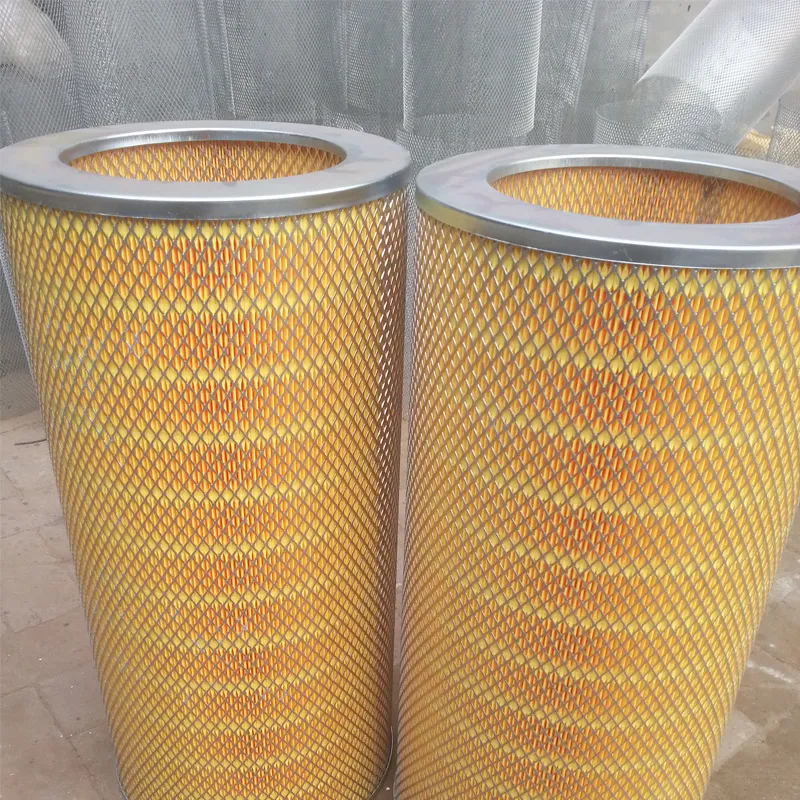 Tel:
+8615930870079
Tel:
+8615930870079
Dec . 07, 2024 01:31 Back to list
cartridge dust collector filter
Understanding Cartridge Dust Collector Filters
In industrial settings, dust collection is a crucial process for maintaining air quality and ensuring a safe working environment. Among the various types of dust collection systems, cartridge dust collector filters are widely recognized for their efficiency and effectiveness. This article delves into the purpose, design, and advantages of cartridge filters, along with their maintenance requirements.
What is a Cartridge Dust Collector Filter?
A cartridge dust collector filter is a type of filtration system used to capture and remove airborne particles from industrial processes. These filters are typically cylindrical in shape and consist of a fabric filter media that collects dust and particulates as air passes through. The design and construction of cartridge filters can vary, but they generally feature a pleated configuration that increases the surface area for dust collection, which enhances their efficiency.
How Does It Work?
The fundamental operation of a cartridge dust collector involves the principle of differential pressure. As contaminated air enters the filter, the dust particles are trapped inside the pleated media while the clean air is allowed to pass through. The accumulated dust forms a filter cake that can enhance filtration efficiency by further capturing smaller particles. Over time, the dust cake thickens and can lead to increased resistance to airflow, necessitating a cleaning process.
Advantages of Cartridge Filters
1. High Efficiency Cartridge dust collectors are recognized for their high filtration efficiency, often achieving up to 99% dust removal rates. This makes them suitable for various applications, including metalworking, woodworking, and chemical processing.
2. Compact Design Compared to baghouse collectors, cartridge filters have a more compact design, which makes them ideal for facilities with limited space. Their smaller footprint allows for easier installation and integration into existing systems.
cartridge dust collector filter

3. Ease of Maintenance Many cartridge dust collectors feature automatic cleaning systems, such as pulse jet cleaning, which periodically dislodge dust from the filter media. This helps maintain consistent performance and reduces the need for manual cleaning.
4. Versatile Applications Cartridge filters can handle a diverse range of dust types, including fine particles, fibrous materials, and heavy dust loads. This versatility makes them suitable for various industries, from food processing to metal fabrication.
5. Lower Energy Consumption Due to their efficient design, cartridge dust collectors often require less energy to operate compared to traditional dust collection systems. This can result in significant cost savings over time.
Maintenance Considerations
While cartridge dust collector filters are designed for durability and long service life, proper maintenance is essential to ensure optimal performance. Regular inspections should be conducted to check for signs of damage or wear. Additionally, the cleaning mechanisms should be tested periodically to confirm they are functioning effectively.
Replacing the cartridge filters at recommended intervals is crucial for maintaining air quality and system efficiency. Depending on the application and dust load, the lifespan of cartridge filters can vary, but proactive maintenance planning can extend their usability.
Conclusion
Cartridge dust collector filters are an integral component of industrial dust management systems. Their high filtration efficiency, compact design, and ability to handle a variety of dust types make them a preferred choice for many industries. By understanding their operation, benefits, and maintenance requirements, businesses can ensure a cleaner and safer work environment while complying with air quality regulations. As industries continue to prioritize health and safety, cartridge dust collector filters will remain an essential part of dust control strategies worldwide.
-
Nano Fiber Technology: Revolutionizing Cartridge Dust Collector FiltersNewsAug.06,2025
-
How Activated Carbon Air Cartridges Eliminate OdorsNewsAug.06,2025
-
Dust Filter Cartridge Handling Fine Particulate MatterNewsAug.06,2025
-
Cartridge Dust Collector Filter for Welding Fume ExtractionNewsAug.06,2025
-
Activated Carbon Filter Cartridge Effectiveness Against VOCsNewsAug.06,2025
-
Activated Carbon Air Filter Cartridge Benefits ExplainedNewsAug.06,2025

 Email:
Email:





